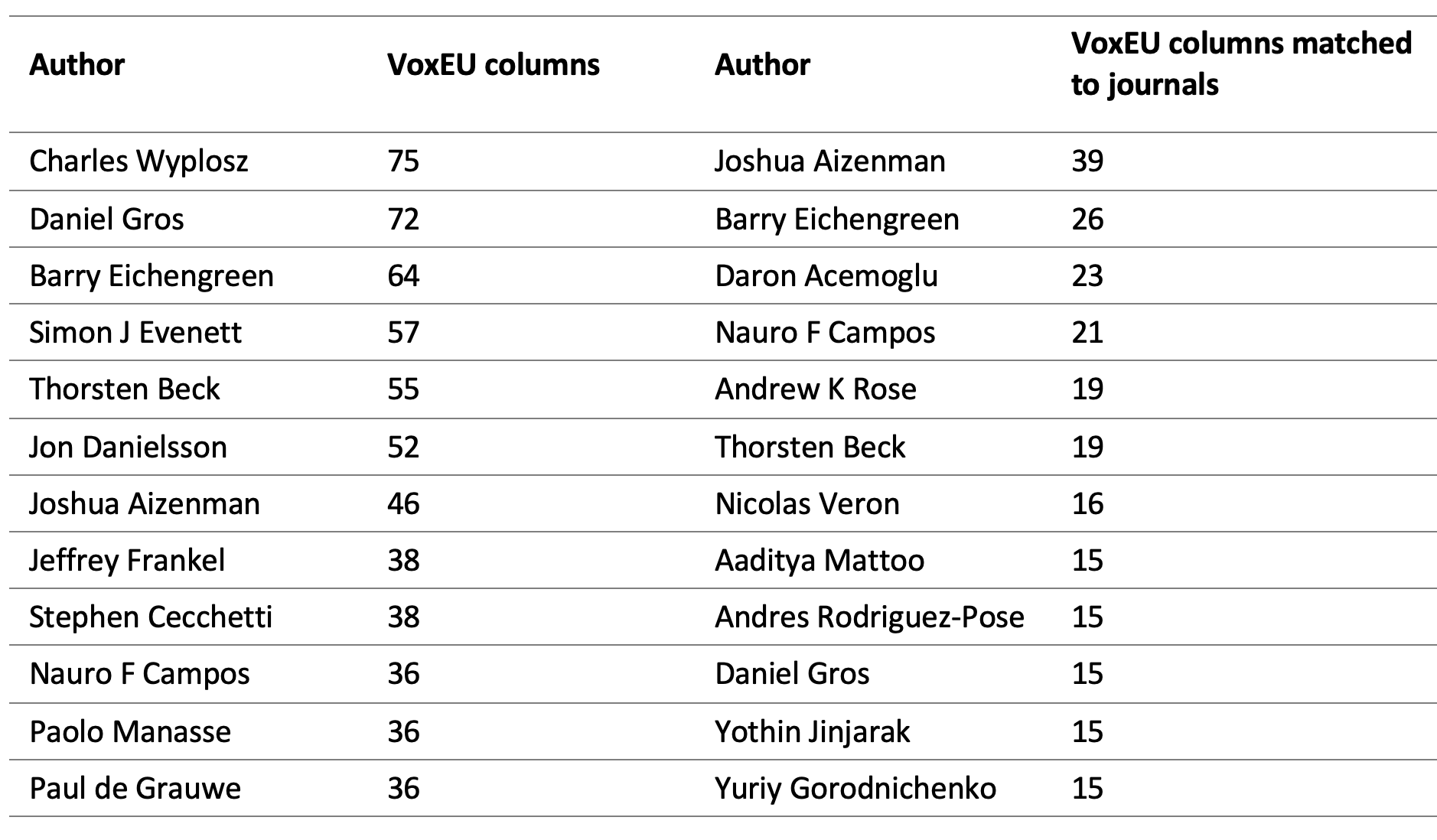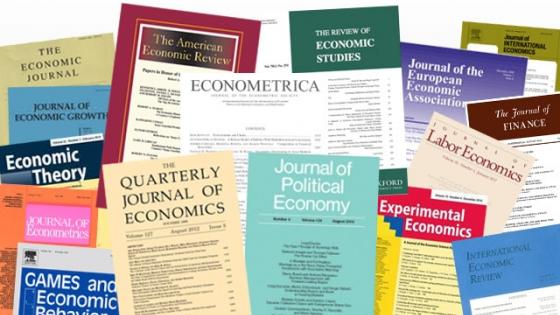Social media has become an essential tool for scholars worldwide. Researchers use social media platforms to share and promote their work, hoping to reach a wider audience and become more influential in their fields. Influence in academic research is measured by citations. Even we economists – while still obsessed with journal rankings (manifesting itself in citation patterns of journal tiers (Galiani et al. 2018) – care about citations, as they are gaining in importance, especially in senior faculty hiring decisions (Hamermesh 2018).
For a research article to accumulate citations, peers must first become aware of its existence. Social media gives researchers a turbo push button to put their research one step ahead in the competition for peers’ limited attention. This raises the question of whether social media activity actually results in increased academic citations. Klar et al. (2020) refer to the active advertising of research on social media as the 'push model' of research, and they find that pushing research on social media, especially on Twitter (now X), correlates with more citations. The crucial question is, however, whether this association is causal or not.
At this point, columns on VoxEU.org became an unlikely hero. Vox has been an important online platform for policy and research dissemination among economists. Most Vox columns are based on recent economics research that was or is about to be published in academic journals. Table 1 documents the top contributors to Vox overall and in terms of published journal articles. Charles Wyplosz, who is the top contributor between 2008 and 2017, wrote 75 Vox columns that could be matched to a journal article, and Joshua Aizenmann wrote 39 Vox columns in the same period.
Table 1 VoxEU.org top publishing authors, 2008–2017 (excluding Vox editors)
As we documented in Chan et al. (2023), Vox can be used as an instrument to establish the causality of social media activity on citations (to Vox founder Richard Baldwin’s surprise, Figure 1). To facilitate this, several separate data sources were first integrated, with Vox as the missing link between peer-reviewed publications and Twitter activity.
Figure 1 VoxEU founder Richard Baldwin’s surprise
As readers of Vox know, Vox columns are based on recent academic research, freshly minted working papers, or opinions on current socioeconomic developments. We matched 2,731 of a total of 6,086 Vox columns between 2008 and 2017 to peer-reviewed journal publications in the Web of Science database. The 452 publications predating their associated Vox columns were excluded from the analysis, so a Vox column is online at least one calendar year before its associated journal publication. There were 30,841 Twitter interactions for 4,653 Vox columns; 12,243 Twitter interactions for 2,905 columns were registered on the very same day that columns went online on voxeu.org. The average number of tweets and retweets of a Vox column is 5.1, whereas its median is zero.
Tables 2 and 3 document the top 10 most-tweeted and most-cited Vox columns that could be matched to a journal article within at least a year from the date of going online on voxeu.org. Hamermesh and Stancanelli’s Vox column in 2014 reached an overall Twitter activity of 150 (this includes tweets, retweets, likes, and comments). The research underlying this column was eventually published in ILR Review in 2015 and collected 18 citations as of 2021. Barro and Lee’s 2010 column, on the other hand, was matched to their Journal of Development Economics articles in 2013, it received 2 Twitter activities and 1,023 citations.
Table 2 Top 10 most-tweeted Vox columns, 2008–2017
Note: Number 10 is shared, due to a tie.
Table 3 Top 10 most-cited journal articles that were matched to Vox columns 2008–2017
Many factors affect citations, for instance, the prestige of the journal. This blurs the descriptive inspection of how Twitter activity and citations may be linked, which is why we control for aspects such as journal ranking, field, citation life cycle, authors’ life cycle, and authors’ previous output quantity and quality.
The invention here, however, lies in our approach to the instrumental variable, which is based on the following idea: Vox columns are often shared on Twitter. If a Vox column goes online on a weekend, it may affect how individuals interact with it on Twitter; yet, there is no reason why this timing should affect citations of the associated journal article through any other channel than the very Twitter activity itself.
This technical observation provides a source of exogenous variance and thus an opportunity to pinpoint the effect of Twitter activity. Figure 2 documents the distribution of Vox columns’ publication times based on the days of the week and season of the year.
Figure 2 Distribution of Vox columns over days and seasons
Notes: Dark columns show the total number; light columns count those matched to a peer-reviewed journal publication.
We find that while Twitter activity is an insignificant predictor that a VoxEU column would have an associated peer-reviewed publication, Twitter activity has in fact a strong positive effect on the citation accumulation of the published journal article. Even a single tweet or retweet about a research paper can lead to 16% more citations compared to when there are no tweets at all. Thus, besides diversifying readership, Twitter can actually increase the academic impact of research.
One may say that the above discussion assumes a very straightforward use of social media, whereas anyone who spends even a little time on social media realises that many researchers don’t only showcase their fresh research there but put themselves on display. One can well claim that there may be a premium to simply being visible on social media, especially since the competition is for the scarce attention of peers in one’s field. Is it true that those who are more visible are also the ones who get more cited?
Lessmann and Önder (2023) tackle this question using COVID-19 as an exogenous shock for incoming citations to researchers’ COVID-related research published before 2019. Travis (2014) published a list of Twitter science stars in 2014 in Science to follow up on the then-heated debate on how some scientists are becoming celebrities on social media and how social media stardom may be delinked from academic merits – this concept was brought forward especially by the introduction of the Kardashian index by Hall (2014).
Lessmann and Önder (2023) use the COVID-19 global pandemic as a quasi-natural experiment to establish a causal relationship between social-media stardom and citations by analysing Twitter science stars’ and their coauthors’ pre-pandemic publications on COVID-related topics. Figure 3 shows the average annual inflow of citations to both groups’ COVID-related research published before 2019. A difference-in-differences analysis shows that the annual citation gap between Twitter science stars and their coauthors widened by 1.07 more citations per year per publication following the breakout of the COVID-19 pandemic, which corresponds to about 70% of the pre-pandemic difference of per year per publication citations of the two groups.
Figure 3 Average annual citations to COVID-related research published before 2016
Social media and the visibility that it offers may seem unreal and not backed by any hardcore academic currencies. To believe this impression, however, would be a grave mistake. Recent research establishes causal links between social media and academic citations. While you might still feel the urge to tell your peers to stop wasting time on social media and get actual work done (and you wouldn’t be wrong to do so!), you need to keep in mind that visibility granted by social media has real effects: it affects academic citations. This may be because your peers see your research so your work stands out amidst much research output and little time; or your visibility in social media sustains and extends peers’ perception of your expertise, which again results in more academic citations.
References
Chan, H, A S Önder, S Schweitzer, and B Torgler (2023), “Twitter and citations”, Economics Letters 231: 111270.
Galiani, S, R Galvez, and M V Anauati (2018), “Differences in citation patterns across journal tiers in economics”, VoxEU.org, 9 October.
Hall, N (2014), “The Kardashian index: A measure of discrepant social media profile for scientists”, Genome Biology 15(7): 1–3.
Hamermesh, D (2018), “Citations in economics: Measurement, uses, and impacts”, Journal of Economic Literature 56(1): 115–56.
Klar, S, Y Krupnikov, J B Ryan, K Searles, and Y Shmargad (2020), “Using social media to promote academic research: Identifying the benefits of Twitter for sharing academic work”, PLoS One 15(4): e0229446.
Lessmann, C, and A S Önder (2023), “Do Twitter’s science stars get a citation premium?”, CESifo Working Paper 10661.
Travis, J (2014), “Twitter’s science stars, the sequel”, Science 6.









